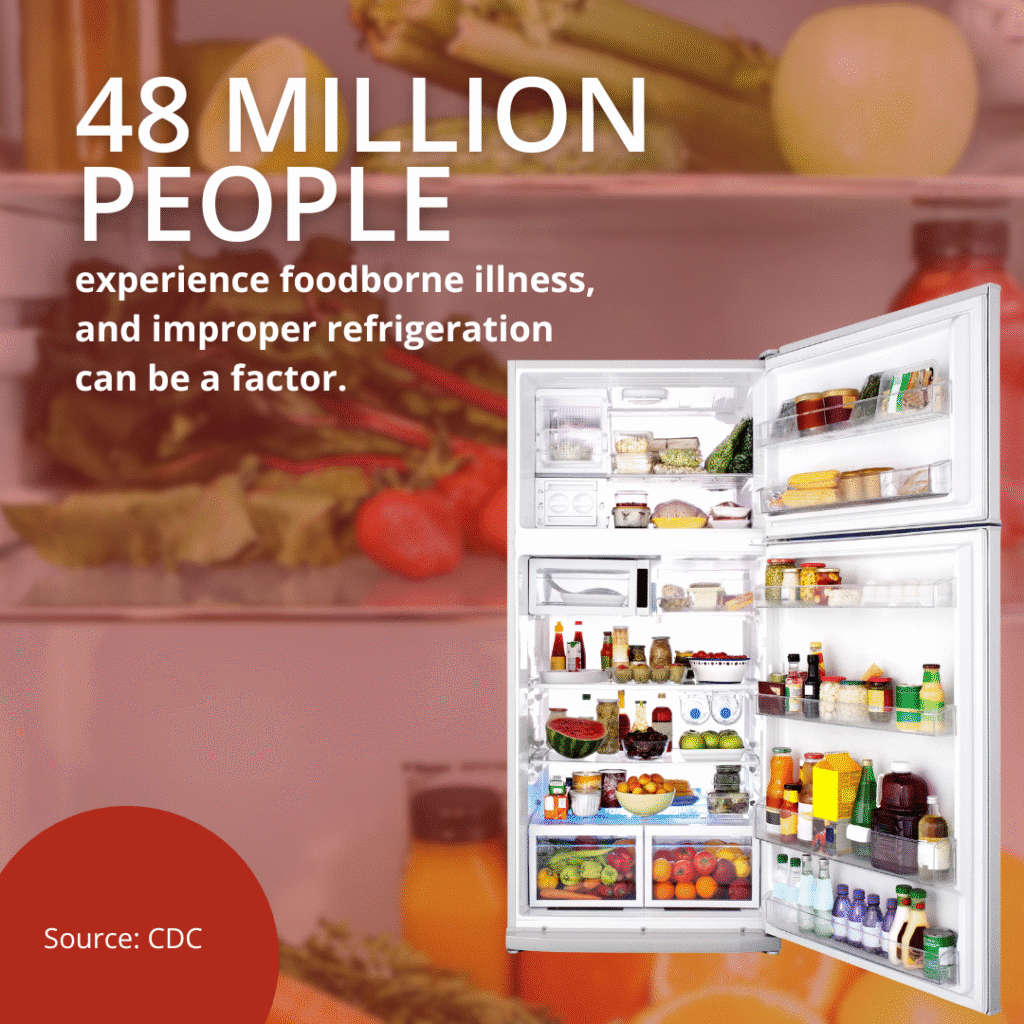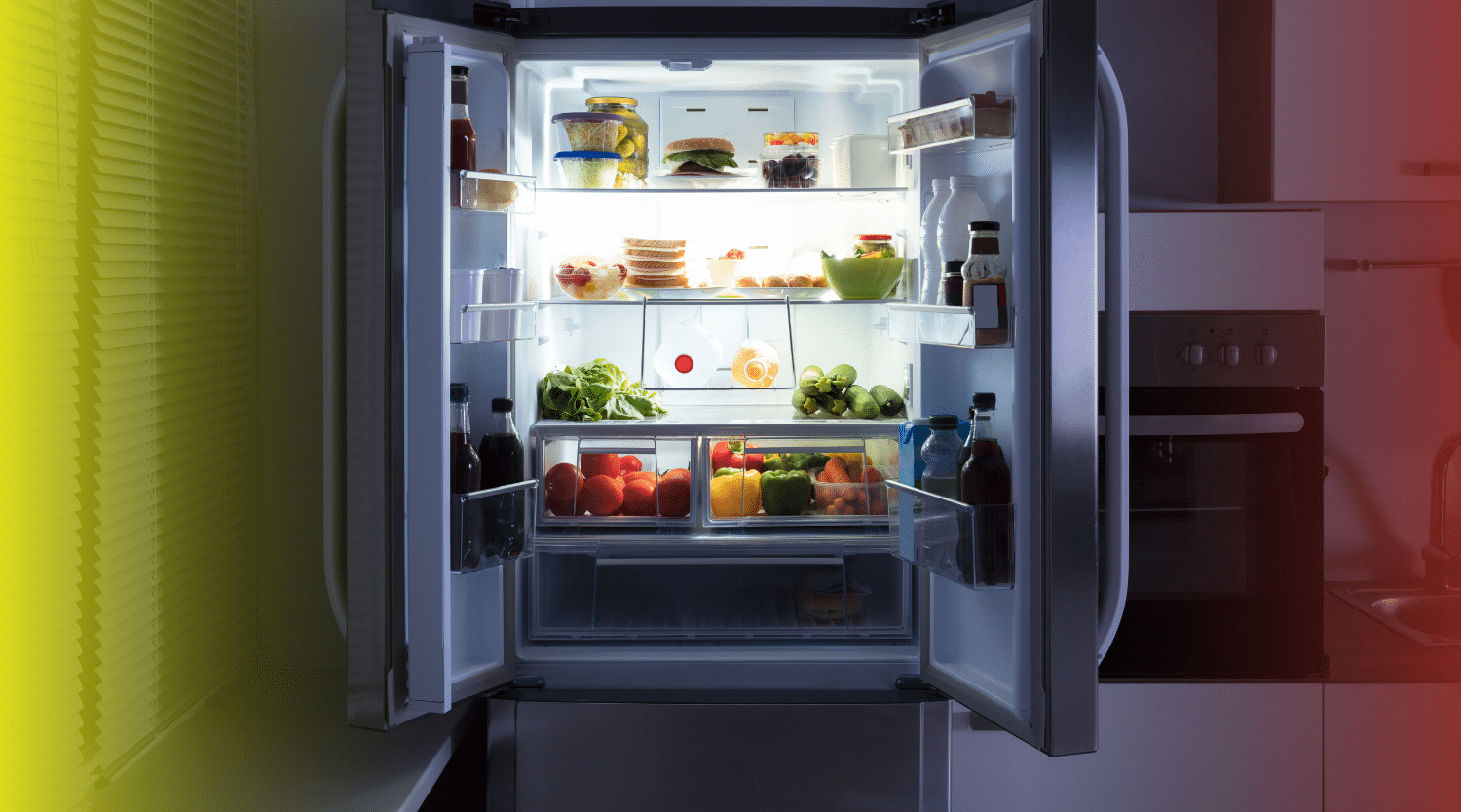When you set up a new refrigerator, one of the first questions you may ask is, “How long does it take a refrigerator to get cold after setup?“ This is an important question because the answer affects food safety and energy use.
Placing food in your fridge too soon can cause it to spoil faster, leading to wasted groceries and potential health risks.
Many homeowners face this situation when moving into a new home or replacing an old appliance. Knowing what to expect can help you plan ahead and avoid unnecessary frustration.
How Long Does it Really Take?
On average, a refrigerator takes 4 to 24 hours to reach the correct temperature after being plugged in. Most models begin cooling within the first few hours, but it can take up to a full day for the temperature to stabilize.
- Manufacturer guidelines: Whirlpool recommends waiting at least 4 hours before adding food. Samsung suggests waiting up to 2 hours for full cooling.
- Temperature standards: The U.S. Food and Drug Administration (FDA) advises setting your refrigerator at 37°F and the freezer at 0°F to keep food safe.

Food safety is key. According to the CDC, foodborne illnesses affect 48 million people each year, and improper refrigeration can be a factor.
What Impacts How Fast a Refrigerator Gets Cold?
Several factors can change how long it takes your refrigerator to cool down:
- Refrigerator type: Top-freezer models often cool faster than French door or counter-depth styles.
- Room temperature and humidity: Warm, humid conditions make it harder for your fridge to reach the right temperature.
- Load inside: An empty refrigerator may cool quicker at first, but a few cold items help stabilize the temperature.
- Power supply: Weak outlets or extension cords can reduce efficiency.
- Energy rating: Newer Energy Star-rated models often reach optimal temperatures faster than older appliances.
If your fridge is taking longer than 24 hours to cool, it may be a sign of an issue that needs attention.
How to Speed Up the Cooling Process Safely
You can help your refrigerator reach the right temperature more quickly by following a few easy steps:
- Set the temperature controls properly. Use 37°F for the fridge and 0°F for the freezer.
- Keep the doors closed as much as possible. Every time you open the door, cold air escapes.
- Add water bottles or ice packs. These help stabilize the internal temperature.
- Avoid overloading the fridge right away. Too much warm food can delay cooling.
- Check the air vents. Blocked vents reduce air circulation inside the unit.
Always review your manufacturer’s manual before making adjustments. Each model can have slightly different recommendations.

Signs Your Refrigerator Isn’t Cooling Properly
If your refrigerator is still not cold after 24 hours, there may be a problem. Look for these signs:
- The compressor is not running or making unusual noises.
- The temperature fluctuates dramatically or never reaches the right setting.
- The interior light or control panel is not working.
- Food is spoiling faster than usual.
At this point, you should contact a qualified technician. When buying or moving into a home, a professional home inspection can help identify appliance issues before they become expensive surprises.
Potential Costs If Cooling Problems Persist
Waiting too long to address refrigerator cooling problems can cost you more than spoiled food.
- The average refrigerator repair cost ranges from $200 to $1,000 and depends on what caused the issue.
- Common repairs: Thermostat or sensor replacements average $100 to $440, while compressor repairs can range from $200 to $450.
- Food waste: The USDA estimates that a family of four loses around $1,500 a year on wasted food, much of it from spoilage.
Identifying these issues early, such as during a home inspection, can save you time, money, and stress.
Frequently Asked Questions
Can I put food in my refrigerator right after plugging it in?
No. A good tip is to wait at least 4 hours to allow the refrigerator to begin cooling. Adding food too early can slow down the process.
Does a full fridge stay colder than an empty one?
Yes, but only once the fridge is already cold. A few items help maintain the temperature, but overloading it at setup can create the risk of delayed cooling.
What if I just moved my refrigerator?
If you laid the refrigerator on its side during a move, wait at least 2 to 4 hours before plugging it in. This allows the refrigerant to settle.
Do older refrigerators take longer to get cold?
Often yes. Newer models are more efficient and may cool faster than older units.
Final Thoughts: Protect Your Home and Appliances
The short answer is that it can take 4 to 24 hours for your refrigerator to get cold after setup. Patience is key, but knowing the right steps can help you get there faster.
If you are unsure whether your refrigerator or other appliances are working correctly, a professional home inspection can give you peace of mind. Identifying issues early keeps your home running smoothly and protects your investment.
Ready to make sure your home is in top shape? Contact PI Home Inspections today to schedule a full home evaluation, including appliance checks.

